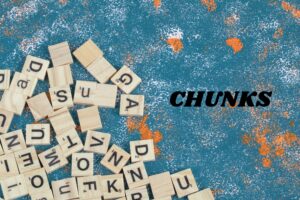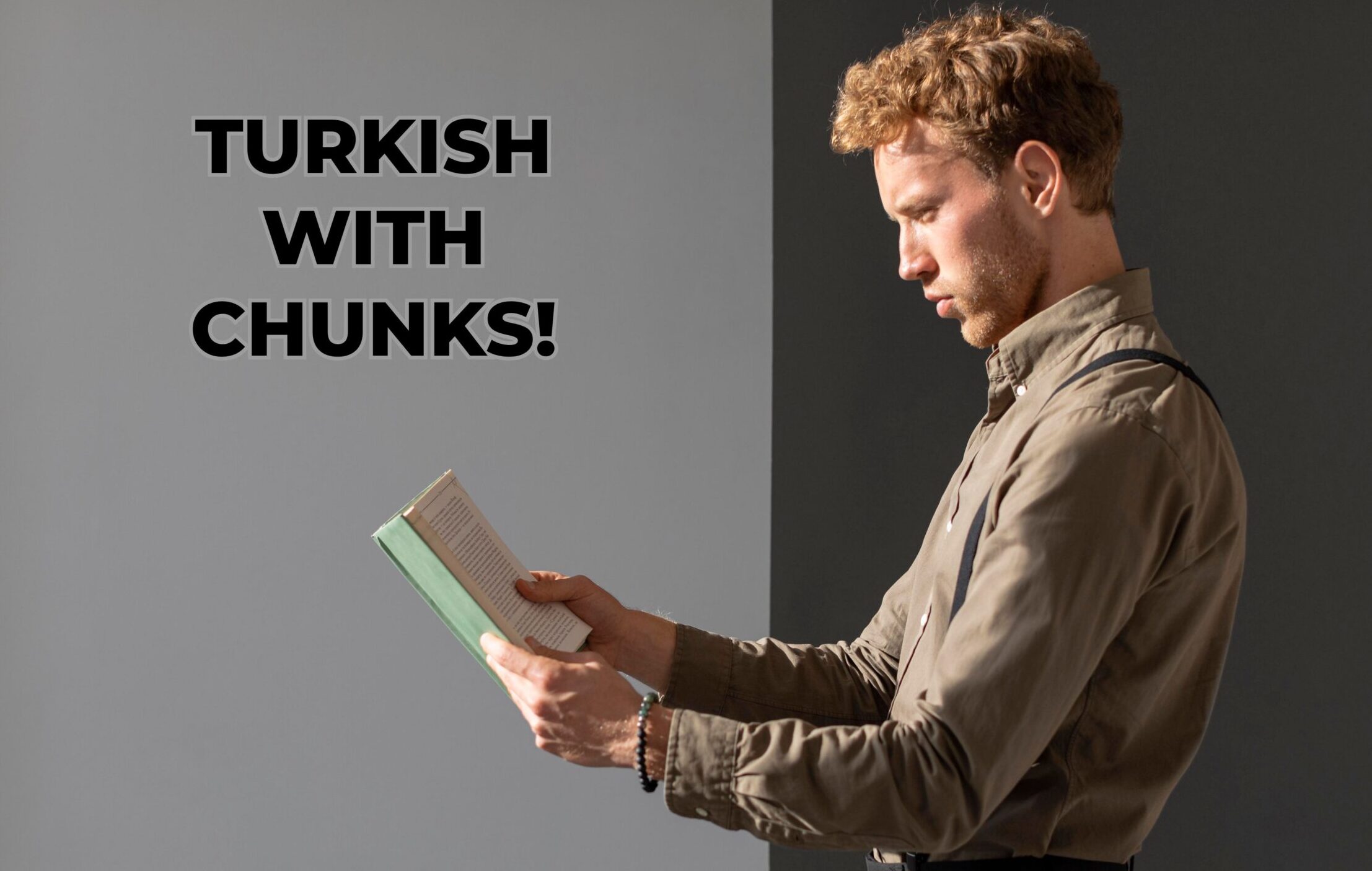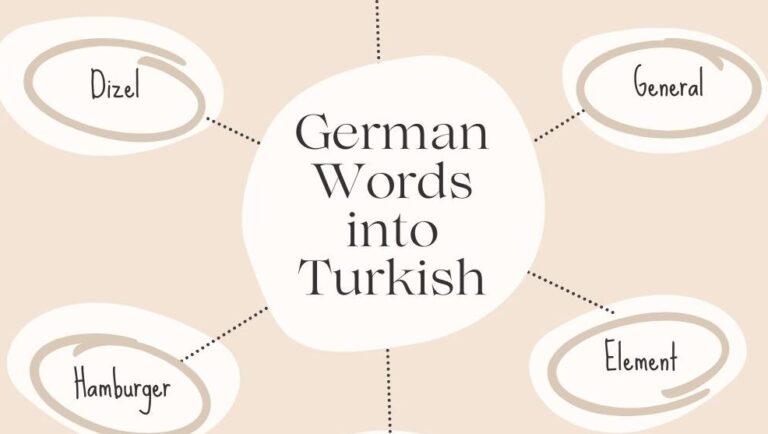Turkish with Chunks!
Chunking is an impressive method for learning a new language!
Have you ever wanted to learn a new language? It’s an amazing journey of discovery! Most of the time we first memorize words. Then, we learn grammar rules. And then, we start to form sentences by combining words with the rules we have learned. But it doesn’t always work out that way! There is a very effective method. It is called “Chunking”

Any complex structure is a combination of simple things. This means the following. If we learn small meaningful structures (chunks ) first, then we can combine them into more complex and longer sentences.
In language learning, ‘chunking’ or the ‘chunk method’ is a way of learning a language by breaking words or phrases into meaningful ‘chunks’ to help you learn more quickly and effectively. These chunks are made up of meaningful groups of words, such as expressions, phrases, or sentence patterns that are often used together rather than individual words. For example, when learning English, phrases such as ‘How are you?’ or ‘Nice to meet you’ are considered chunks.
Basically, in any language, words are used with other words. These are chunks!
What are language Chunks?
Michael Lewis published The Lexical Approach (Lewis, 1993) over 25 years ago. This changed how we view language and how we teach it. Lewis argued that language comprises chunks that fit together to make sentences.
By ‘chunks’, Lewis was referring to everything from:
•collocations (wrong way, give way, the way forward)
•fixed expressions (by the way, in the way)
•formulaic utterances (I’m on my way; no way!)
•sentence starters (I like the way…)
•verb patterns (to make/fight/elbow one’s way…)
•idioms and catchphrases (the third way; way to go!)
Why chunking is important?
When we learn a language, we learn to say our name, age, etc. simply. For example, in Turkish, we say our name like this.
“Benim adım Sercan.”
We learn this sentence as a whole. In fact, there are many grammar rules in this sentence. The possessive suffix, the absence of “am is are” in Turkish, etc. But we learn and use this sentence without knowing these details. This helps us to speak and write the language more quickly.
The other advantages of chunking are as follows:
- Makes meaningful connections: Instead of just memorising words, the person puts them into a meaningful context. This makes it easier to remember what has been learned.
- Increases fluency: It provides a fast and natural flow in the use of language. Students who learn frequently used patterns as a whole become more fluent in speaking or writing.
- Reduces the need for grammar: It is possible to learn some structures without the need for individual grammar rules. For example, a student who learns the structure ‘I’m used to…’ as a chunk can consciously use this structure without having to refer to grammar.
- Speak more naturally. Words often come together in common phrases. Learn groups of words together and you will speak like a native.
- Chunking is an effective method for remembering more. Putting words together in context with other words you already know is the best way to reduce the cognitive load of learning new vocabulary.
- It helps you understand where sentences naturally break. You will understand better how words connect together into groups, and you will hear where one-word ends and another begins.
How to learn in Chunks?
These chunks allow you to react quickly in certain situations while learning Turkish and help you use the language with a more natural flow. Learning such ‘chunks’, which are especially used in daily life, both increases your fluency in speaking and provides more command of the language.
Here’s how you can apply it to learn Turkish more effectively.
Selamlaşma ve Vedalaşma İfadeleri (Greetings and Farewells):
- “Nasılsın?” (How are you?)
- “Kendine iyi bak.” (Take care of yourself.)
- “Görüşmek üzere.” (See you later.)
- “Hoş geldiniz.” (Welcome.)
- “İyi günler.” (Good day.)
Sık Kullanılan Kalıplar (Common Phrases):
- “Bilmiyorum.” (I don’t know.)
- “Sana katılıyorum.” (I agree with you.)
- “Fikrini değiştirdin mi?” (Did you change your mind?)
- “Bu konuda ne düşünüyorsun?” (What do you think about this?)
- “Doğru söylüyorsun.” (You’re right.)
İhtiyaç İfade Eden Kalıplar (Expressing Needs):
- “Yardım edebilir misin?” (Can you help?)
- “Bir şey sorabilir miyim?” (Can I ask something?)
- “Bir saniye lütfen.” (One moment, please.)
- “Ne demek istiyorsun?” (What do you mean?)
- “Neye ihtiyacın var?” (What do you need?)
Günlük İfadeler (Daily Expressions):
- “Ne yapıyorsun?” (What are you doing?)
- “Nerede buluşalım?” (Where shall we meet?)
- “Bir şeyler yemek ister misin?” (Would you like to eat something?)
- “Hangi filmi izledin?” (Which movie did you watch?)
- “Ne zaman geliyorsun?” (When are you coming?)
Duygu İfadeleri (Expressing Emotions):
- “Seni çok özledim.” (I missed you a lot.)
- “Bu harika!” (This is amazing!)
- “Hiç beğenmedim.” (I didn’t like it at all.)
- “Gerçekten çok üzüldüm.” (I was really saddened.)
- “Buna çok sevindim.” (I was very glad about this.)
- “Buna çok şaşırdım.” (I was very surprised by this.)
- “Beni çok mutlu ettin.” (You made me very happy.)
- “Hiç beklemiyordum.” (I didn’t expect it at all.)
- “Buna çok üzüldüm.” (I was very saddened by this.)
- “Çok heyecanlandım.” (I was very excited.)
- “İçimden geldi…” (I felt like it…)
- “Çok hoşuma gitti…” (I really liked it…)
- “Aklım başımdan gitti…” (I was blown away…)
- “İçim burkuldu…” (I felt a pang of sadness…)
- “İnanılmaz derecede mutlu oldum…” (I was incredibly happy…)
Zaman Belirten Kalıplar (Time-Indicating Phrases):
- “Gençken…” (When I was young)
- “Çocukken…” (When I was a child)
- “Eskiden…” (In the past)
- “Lisedeyken…” (When I was in high school)
- “Üniversitedeyken…” (When I was in college/university)
- “Evdeyken…” (When I was at home)
Şart ve Durum Belirten Kalıplar (Condition and State Phrases):
- “Fırsat buldukça…” (Whenever I get a chance)
- “Müsait olduğumda…” (When I am available)
- “Zamanım olduğunda…” (When I have time)
- “İmkânım olursa…” (If I have the opportunity)
Süreç ve Alışkanlık Belirten Kalıplar (Process and Habit Phrases):
- “Her zaman…” (Always)
- “Eskiden beri…” (Since the past)
- “O zamanlar…” (Back then, at that time)
- “Genellikle…” (Usually)
- “Ara sıra…” (Occasionally)
Duygu ve Düşünce Belirten Kalıplar (Emotion and Thought Phrases):
- “Aklımda kaldığı kadarıyla…” (As far as I remember)
- “Hatırladığım kadarıyla…” (As far as I recall)
- “Duyduğuma göre…” (According to what I’ve heard)
- “Düşündüğüm kadarıyla…” (As far as I think)
Geçmiş Anlatan Kalıplar (Past Expressive Phrases):
- “Bir keresinde…” (Once…)
- “Bir zamanlar…” (Once upon a time…)
- “Geçenlerde…” (Recently…)
- “Bundan yıllar önce…” (Years ago…)
- “O zamanlar…” (Back then…)
Şart ve Koşul Belirten Kalıplar (Condition and Requirement Phrases):
- “Eğer mümkünse…” (If possible…)
- “İhtimal dahilinde…” (Within the realm of possibility…)
- “Şartlara göre…” (According to the conditions…)
- “Her ne olursa olsun…” (No matter what…)
Sebep-Sonuç İfade Eden Kalıplar (Cause-and-Effect Phrases):
- “Bu yüzden…” (For this reason…)
- “Bu nedenle…” (Therefore…)
- “Sonuç olarak…” (As a result…)
- “Dolayısıyla…” (Consequently…)
- “Bundan dolayı…” (Because of this…)
Görüş Bildirirken Kullanılan Kalıplar (Phrases Used to Express Opinions):
- “Bana kalırsa…” (In my opinion…)
- “Düşünceme göre…” (According to my thoughts…)
- “Benim fikrimce…” (As for my idea…)
- “Şahsi görüşüme göre…” (From my personal perspective…)
Gelecek Planlaması Yaparken (While Planning for the Future):
- “İleride…” (In the future…)
- “Yakında…” (Soon…)
- “Bir gün…” (One day…)
- “Bir ara…” (Sometime…)
- “En kısa zamanda…” (As soon as possible…)
These are practical, ready-to-use sentence fragments that you can use in conversation without thinking. They contribute to a more natural use of language and increase fluency.




